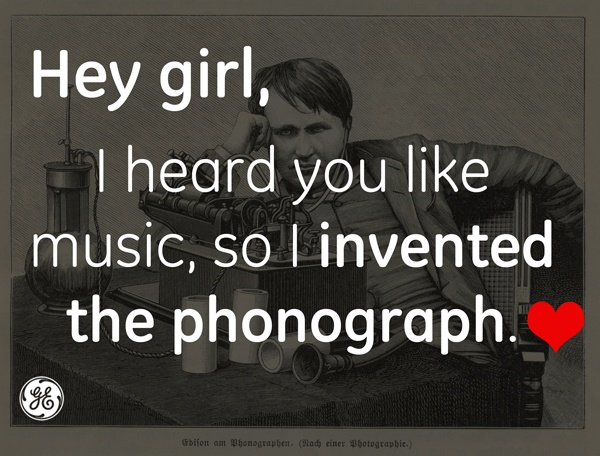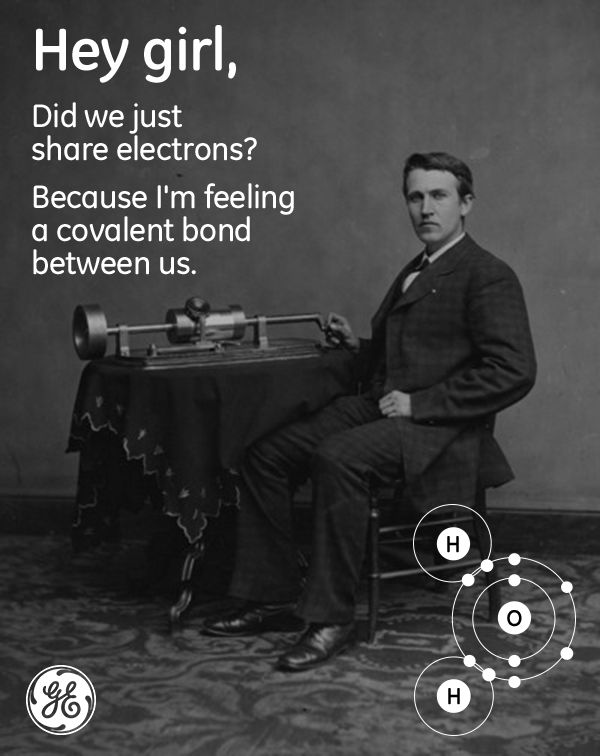Brands
GE’s ‘Hey Girl’ Pinterest Shows Why Brands Should Think Like Bloggers
When it comes to social content, it’s never a bad idea to stop thinking like a brand and start thinking like a blogger.
Case in point? GE’s “Hey Girl” Pinterest Board, which is filled with hilarious memes and has amassed 10,500 followers since it was launched this past fall.

As you might guess, the board plays off the viral Fuck Yeah Ryan Gosling Tumblr, whose memes feature Gosling seducing the reader with ridiculous Hey Girl sayings.
On GE’s boards, the role of Gosling is played by Thomas Edison.
Some favorites:


The memes have generated engagement through repins, likes and comments, and it’s worth noting that GE didn’t do anything groundbreaking here. They simply thought, “What’s something funny we could use to create memes about our company?” and someone came up with the idea of baby-faced Thomas Edison’s electric seductions. Then, they tested it out by posting it on an emerging new social network, Pinterest.
But while it may not be groundbreaking, it is unique. Most brands don’t think like this, and they should. GE didn’t likely do 18 months of market research to find that consumers are predisposed to respond positively to Thomas Edison memes. They tried something new that had little cost or downside, and it worked well.
You can also see how GE is thinking like a smart, dedicated blogger in how they’re nurturing their audience in the comments on the meme. Check out this awesome interaction with a high school physics teacher:

In interactions with followers, GE’s corporate voice is professional but friendly, and serves as a good representation of the company. The memes and meme captions showcase the company’s lighter stuff enough that they don’t need to be pulling one-liners in the comments.
There’s no reason for most brands to be sitting on the sidelines and not launching content experiments like this. If you use common sense, social content is a low risk, high reward game. The sooner brands start thinking like bloggers when it comes to social, the better off they’ll be.
Get better at your job right now.
Read our monthly newsletter to master content marketing. It’s made for marketers, creators, and everyone in between.




